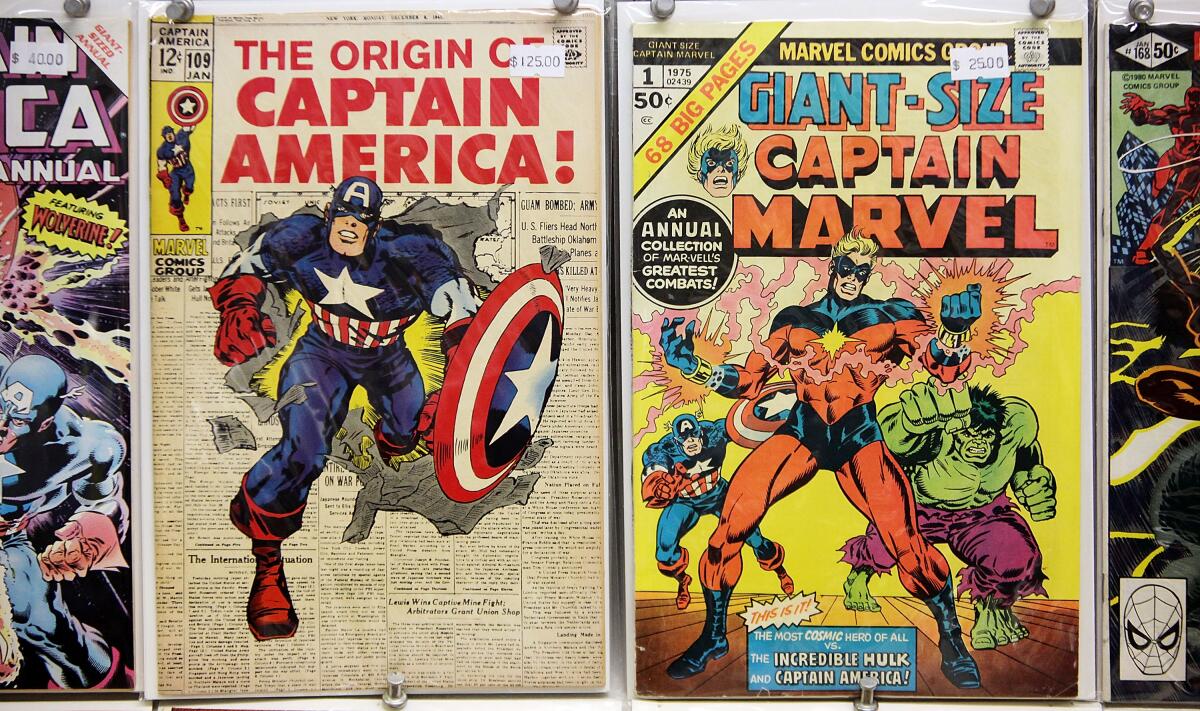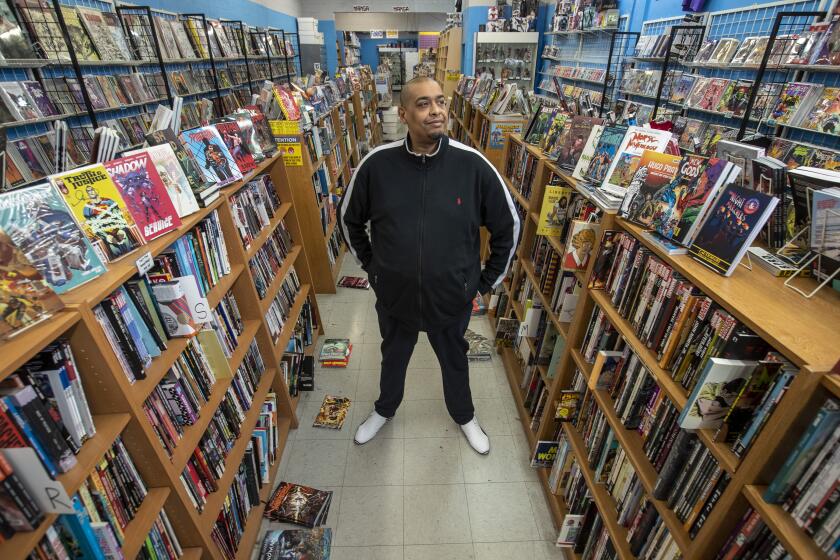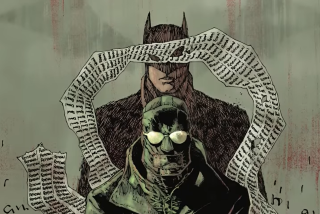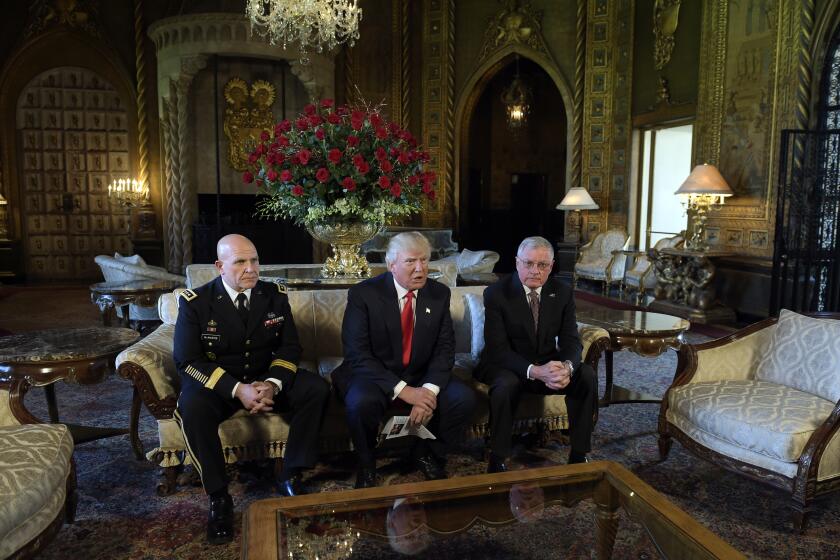Op-Ed: Bonding with my son over comic books? Marvelous

Given our own predilections for art and music and writing, my wife and I figured that we’d probably have an artsy sort of kid — when she was pregnant and the baby was kicking we’d joke he would be a drummer for our band. But the kid we got is really into science and math. Almost from the time Sterling could talk, he made it clear that concrete, interestingly complex systems were what set his gears turning: the periodic table of the elements, the orbits of the planets, Minecraft.
Our differences made me worry, neurotically, that the kid I loved just sort of tolerated my presence. Then, around the time Sterling turned 10, I taught a class on the history of American superhero comics and he asked if he could see a slideshow I’d put together for it. I walked him through it and I could sense the tumblers lining up in his brain. He didn’t care about the costumes or the action or the characters, especially, but he could see that it was the kind of complicated system he adores.
A few days later, he came to me and said, “Hey, Dad? I’d like to try to read all the Marvel superhero comics, in order. Not publication order, but continuity order. I want to read them all in the order the events happened to the characters.”
He liked it when I read out loud to him, and I liked doing that too, so that’s mostly how we operated at first. To my surprise, he reveled in the earliest Fantastic Four and Hulk comics, bursting out laughing at Stan Lee’s corny jokes. They were stories made to thrill 10-year-olds, and 50 years after they were created, they still work just fine for that purpose. We were having fun together, more than ever before.
As I dug through my long white cardboard bins for yellowed copies of “Marvel Super-Heroes” and “Tales to Astonish,” I realized: This is why I kept these. This was my payoff for tracking down back issues and hauling them from house to house, never selling them off or throwing them out. Getting to share my old comics with my kid was exactly the thing I always wanted.
I understood that Sterling’s interest was liable to wane at any time: Getting over brief phases is what kids do, and arguably what I had failed to do. But he kept reading, and after a few months, he decided we should skip forward to the “modern crossover era” that had begun around 2006, as most of Marvel’s comics, from “The Amazing Spider-Man” to “Fantastic Four’” to “Captain America,” started to intertwine more, often responding to shared fictional events from different perspectives.
He was totally into it. The plot threads tightly strung between two or 10 or 30 series at once were exactly what he was looking for. Marvel crossovers became our shared ritual, the thing we did on afternoons and weekends: sitting on the couch, reading through “Secret Invasion” and “Avengers vs. X-Men” together. We bonded over Thing-vs.-Hulk fights and “Secret Empire” and Doctor Octopus. It’s given us a shared body of lore that we can talk about or draw on for conversations about other things.
When I asked Sterling if there was a particular character with whom he identified, he said “Peter Parker. The version from the ’60s.” Oh, the bitter, frustrated science whiz who’s trying to find his place in the world? “Mm-hmm!” he said with a sly grin. “How about you?” I told him that I hadn’t been able to think of anyone. “Really?” he said. “I’m surprised you didn’t say Brain Drain” — the gloomy existentialist brain with a robot body from “The Unbeatable Squirrel Girl.” Touché, kid.
Black superheroes are popular onscreen thanks to the work of Black creators of comic book characters and stories that anticipated this racial reckoning moment.
Sterling is a teenager now. I still remind myself that at some point, he will probably dismiss all these comics as childish things to put away, like Peter Parker walking away from the trash can where he has left his Spider-Man costume. At some point, he might come back to them, or not.
If he does return to the Marvel story, or if he never leaves it, I hope he finds its glorious imaginary world changing all the time, keeping pace with the real one in which he lives. I hope, too, that what he cares about is the story itself — the characters, the images, the imaginative leaps and eleventh-hour improvisations that hold it together — and its creators, rather than the business entity that stamped a logo everywhere on it. It’s a flawed and sprawling thing, an endlessly complicated system shaped as much by accidents of commerce as by art and creativity. But it’s the story that brought us together.
Douglas Wolk is an Eisner award winner and cultural critic. His new book, “All of the Marvels: A Journey to the Ends of the Biggest Story Ever Told,” is set to be published Tuesday.
More to Read
A cure for the common opinion
Get thought-provoking perspectives with our weekly newsletter.
You may occasionally receive promotional content from the Los Angeles Times.











